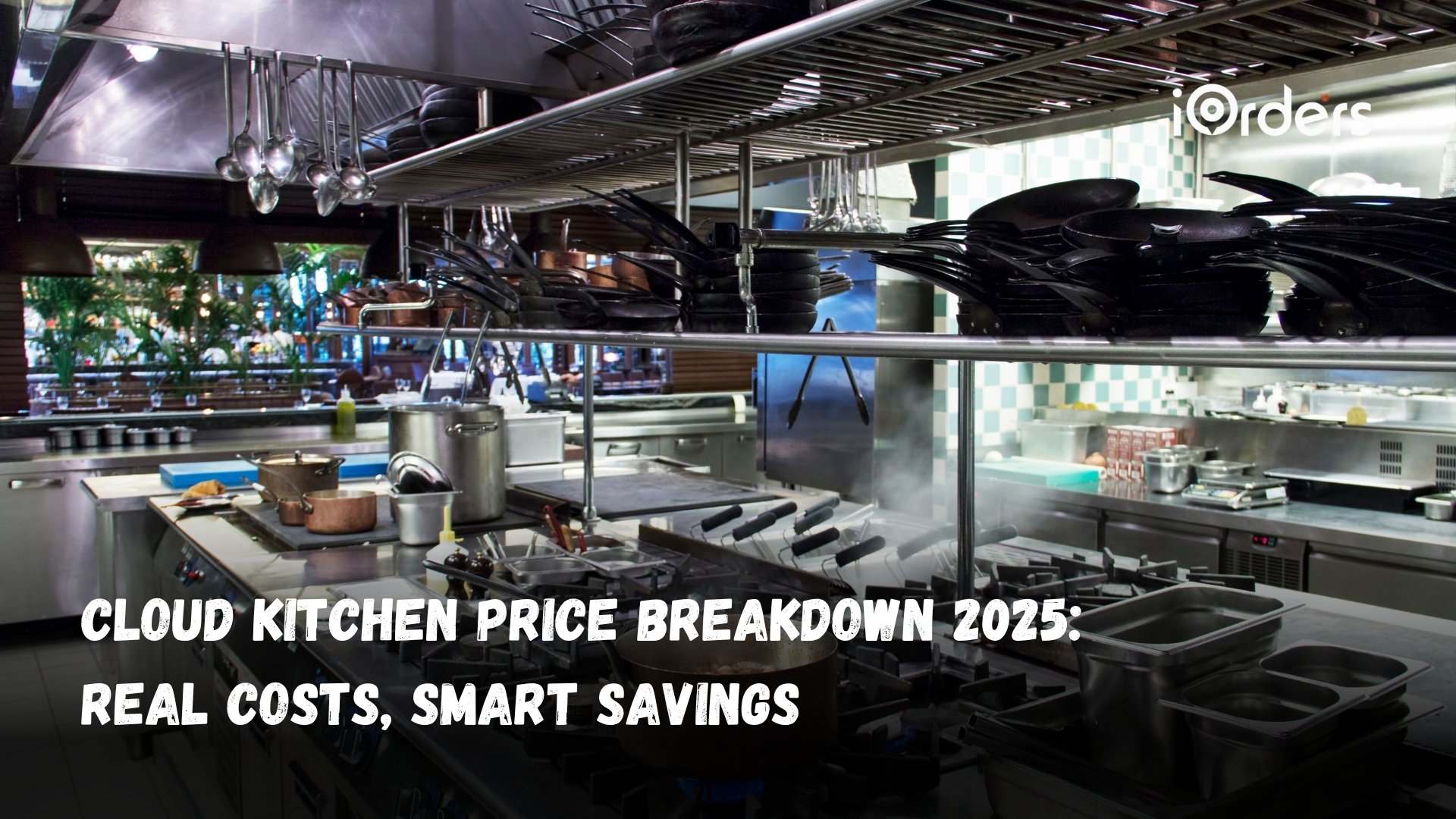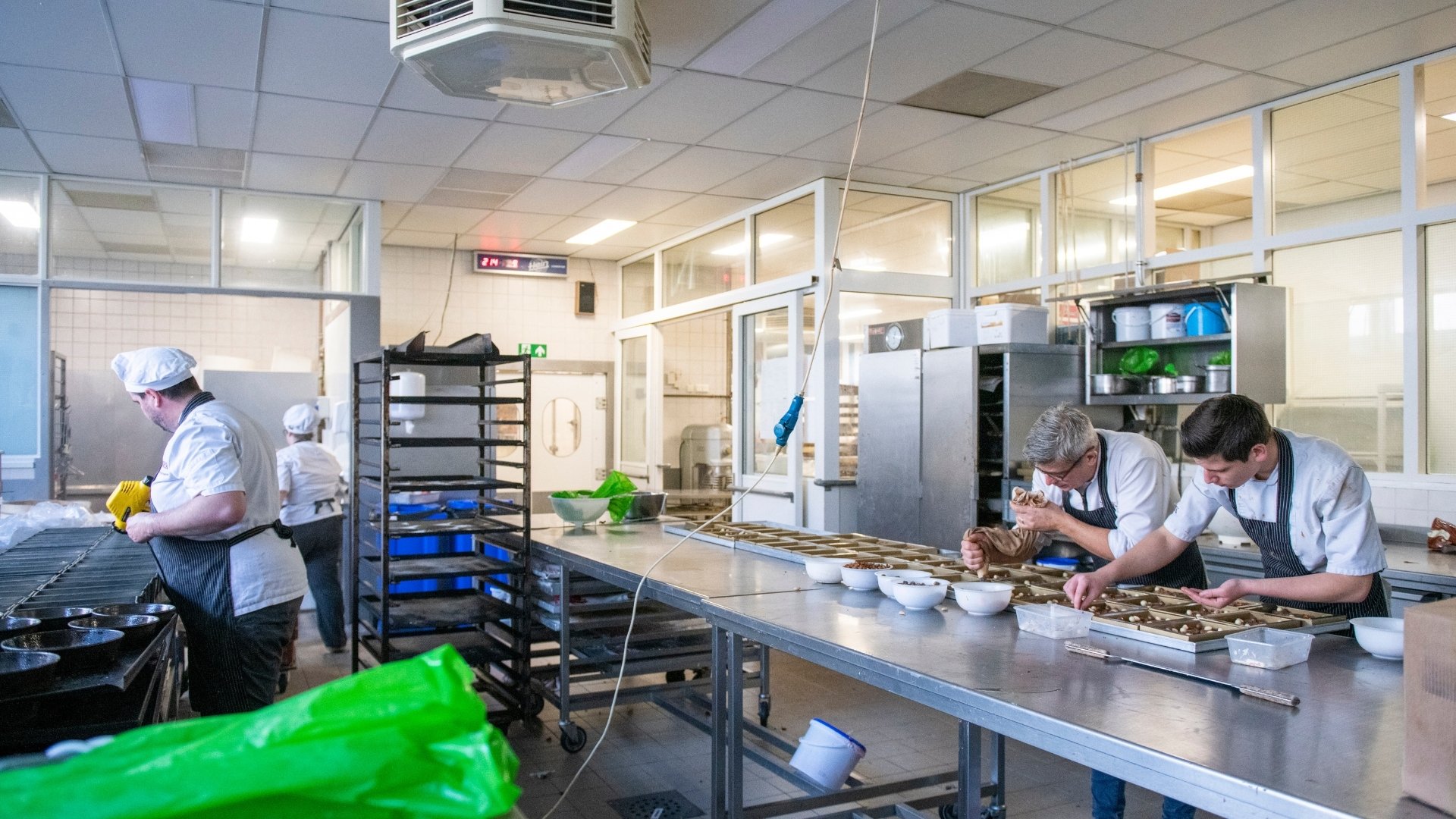October 22, 2025

As we approach 2026, cloud kitchens are no longer a disruptive experiment; they’re fast becoming the backbone of digital dining. The global cloud kitchen market, valued at USD 78.1 billion in 2024, is projected to more than double to USD 176.4 billion by 2033, growing at a CAGR of ~9.5%.
Meanwhile, in 2025, analysts already anticipate the sector to pass USD 82 billion, as delivery-first dining cements its place in consumer behavior.
In Canada and North America, these shifts are being felt even more sharply. Younger demographics, tight real estate markets, and rising demand for contactless convenience are pushing entrepreneurs to consider lean, delivery-only kitchen models.
But opportunity always comes with uncertainty:
In this guide, we’ll peer into the near future, estimating cloud kitchen price ranges (CAD + USD) for setup, licensing, and operational costs as of 2025–2026. We’ll flag the hidden expenses many miss, and show how you can use smart tech and lean strategies to stay ahead of the curve.
A few years ago, a cloud kitchen was simply a delivery-only setup, a space where chefs prepared meals without the need for dine-in tables, décor, or front-of-house staff. Fast forward to late 2025, and the model looks very different.

Today’s cloud kitchens are evolving into tech-enabled food hubs, blending AI, automation, and data analytics to streamline everything from menu optimization to delivery timing. They’re not just kitchens; they’re digital businesses with physical infrastructure.
Cloud kitchens operate on a simple principle:
Lower overhead, higher scalability.
By cutting out real estate costs and focusing on digital ordering, restaurateurs can expand faster, serve more customers, and experiment with new brands, all under one roof.
But now, we’re seeing an even bigger shift:
In Canada and the broader North American market, this evolution is being accelerated by economics. Real estate prices continue to rise, while online ordering remains a growth engine. The result? More entrepreneurs are choosing lean, tech-driven cloud kitchens over traditional setups.
For restaurant owners, this model offers flexibility, but it also demands smart planning. Setting up a cloud kitchen may cost far less than a full-scale restaurant, but licensing, infrastructure, and operational costs can add up quickly if not managed strategically.
Let’s break down what those real numbers look like from initial setup to monthly operations and how to keep your cloud kitchen profitable in 2026 and beyond.
Launching a cloud kitchen in 2025–2026 isn’t just about finding a kitchen space; it’s about building a lean, scalable operation that balances upfront investment with long-term flexibility. While costs vary depending on location, size, and brand ambition, here’s a breakdown of what entrepreneurs typically spend.
Insight:
The total startup cost of a single-brand cloud kitchen typically falls between $75,000 and $150,000, depending on scale. Multi-brand or hybrid setups can go higher, but technology and shared spaces are helping operators stay lean.
What’s interesting is that these costs are shifting. Rather than investing in real estate or décor, cloud kitchen operators are now investing in tech infrastructure, data systems, and brand visibility, the new growth engines of the food industry.
Next, let’s break down one of the most overlooked, yet critical parts of your cloud kitchen setup: licenses and legal requirements.
Running a cloud kitchen may look simpler than operating a dine-in restaurant, but when it comes to licensing, it’s still a regulated business. You’ll need to meet food safety, business, and facility compliance standards before you start serving your first order.
Here’s a breakdown of the most common requirements and their typical costs:
Cloud kitchen licensing is shifting toward digital compliance platforms, meaning faster approvals, remote inspections, and integrated food safety reporting. Shared kitchen operators increasingly include these costs in rental packages, offering startups a compliance-ready launchpad.
Another growing trend: multi-brand kitchens need only one core license, provided all menus operate under the same legal entity and address, a major cost-saver for entrepreneurs scaling multiple virtual brands.
In short, while licensing can seem daunting, it’s becoming more standardized and technology-friendly. The key is planning early, budgeting realistically, and partnering with facilities or platforms that simplify compliance from day one.
Setting up your cloud kitchen is only half the journey. The real challenge begins once orders start rolling in, because that’s when small, often-overlooked expenses start adding up.
Even the most efficient operators face margin pressure from costs that aren’t obvious upfront. Here are the biggest culprits to watch out for in 2025–2026:
Cloud kitchens that rely purely on aggregator apps tend to lose 20–25% of revenue to commissions and delivery markups. By contrast, kitchens that build direct-ordering ecosystems (via QR, web, or app) see up to 15% higher profit margins, proving that control over your digital channel is as important as control over your kitchen.
The smartest operators entering 2026 aren’t chasing volume; they’re building efficient, tech-backed ecosystems where every order contributes meaningfully to profit.
Next, let’s take this a step further. We’ll map out what a sustainable, future-ready cloud kitchen model looks like, one that’s lean, data-driven, and designed to scale without bleeding cash.
The next generation of cloud kitchens isn’t just cutting costs; it’s redefining efficiency.

Smart kitchens now blend automation, data, and brand control to run leaner, faster, and more profitably than ever.
Cloud kitchens are evolving into intelligent food ecosystems where data drives every decision and technology powers every plate.
Building an intelligent kitchen is no longer a luxury; it’s a necessity. iOrders helps you make that shift effortlessly, turning complex operations into a streamlined, profit-driven system.
Running a cloud kitchen means juggling multiple moving parts from order management and delivery logistics to marketing and customer retention. iOrders helps simplify that complexity by bringing everything under one system

Instead of switching between platforms, iOrders gives restaurant owners a centralized dashboard to manage operations, track performance, and grow direct orders all without paying third-party commissions.
Here’s how it helps cloud kitchens run smoother and more profitably:
In short, iOrders helps cloud kitchens stay efficient, reduce costs, and build stronger customer relationships, all without adding extra tools or manual work.
👉 Book a demo to see how iOrders can help your kitchen run lean, profitable, and in control.
At its core, a profitable cloud kitchen isn’t defined by low setup costs; it’s defined by control. Control over your orders, your margins, and your customer experience.
When every process from ordering to delivery works in sync, costs fall naturally, and operations start to scale without strain. That’s what separates sustainable kitchens from those that burn out chasing aggregator volume or short-term sales.
Technology has made it easier than ever to run leaner, smarter kitchens that focus on what matters most: consistent food quality, reliable profits, and loyal customers. The goal isn’t just to cut expenses; it’s to create a system that grows with you.
Whether you’re launching your first virtual brand or optimizing an existing setup, streamlining your operations through connected tools like iOrders helps you stay agile, data-aware, and in full control of your business performance every single day.
The average cloud kitchen cost ranges between $25,000 and $80,000, depending on location, kitchen size, and equipment quality. Shared commercial kitchens can lower setup costs significantly, while independent facilities require higher investment in infrastructure, utilities, and licenses.
A cloud kitchen license typically includes a business registration, food service establishment license, health and safety permit, and employee food handler certification. Depending on your region, you may also need fire safety and zoning approvals. Expect total cloud kitchen license costs between $2,000 and $7,000.
Monthly cloud kitchen operating costs include rent, ingredients, packaging, delivery fees, utilities, staff wages, and marketing. On average, operating expenses account for 50–65% of monthly revenue, with food cost and third-party delivery commissions being the biggest contributors.
The best way to lower costs is by using data and automation to optimize menu design, inventory, and delivery logistics. Running direct online orders through your own website or app (instead of third-party aggregators) also eliminates commissions and boosts profit margins.
For most startups, renting a shared commercial kitchen is more cost-effective, with flexible terms and lower upfront investment. However, if you plan to scale or operate multiple virtual brands, owning a private cloud kitchen gives you better control over branding, layout, and long-term costs.